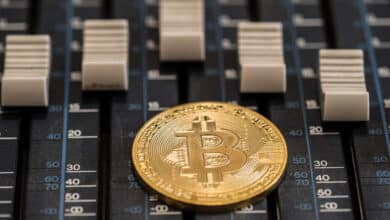DApps – All You Need To Know

Apps that are not centralized are referred to as DApps. They’re comparable to regular apps and perform similar duties, except they’re operated on the peer-to-peer network just like a blockchain. This means that the network is not under the control of a single person or organization. Other important features include:
· It should be open-source and self-contained, with no third-party control.
· Its data and information must be accessible to the general public.
· To keep the network secure, it must utilize a cryptographic token.
While many of those in blockchain and crypto communities believe that these values should be upheld because the industry has evolved, DApps that utilize some, a blend of, or none of the aforementioned qualities have emerged. There’s more on that later. There is minimal difference between a decentralized app running on the blockchain and a standard app running on a web or an operating system from the user’s perspective.
The primary distinction is that instead of a centrally managed operating system, decentralized programs (DApps) run on immutable and distributed blockchain networks. As a result, they are virtually impossible to filter.
DApps may run everything from the games and markets to decentralized finance (DeFi) lending services in regard to what they can achieve. DApps, on the other hand, have a few key qualities that distinguish them from their centralized counterparts.
Firstly, DApps has to be open-source, which means that the code is visible to anybody and that any upgrades and changes must be decided by a consensus process, such as a majority vote, rather than through a developer.
Second, DApps must be decentralized (obviously). This means that all of the DApp’s data and records are saved on a public, immutable blockchain. Third, DApps are rewarded for validators by generating and using tokens. Bitcoin, by these standards, is a DApp, although with its own blockchain built-in.
Smart contracts are at the basis of nearly all DApps. These are self-executing contracts in which the trader’s terms are put into the code. When predefined circumstances are fulfilled, smart contracts are immediately settled, eliminating the need for intermediaries that add cost and risk to trades.
Smart contracts are also “trustless” because they don’t have to trust each other to complete a transaction. These can be simple exchanging one crypto for another or purchasing artwork on an NFT market.
Dapps Are Made Possible By The Blockchain
Blockchain protocols have been regularly improved and refined since Bitcoin’s introduction over a decade ago to unlock new functions and use cases. Everything from economics to gaming to online browsing to art collecting is now possible thanks to a burgeoning industry of decentralized applications (DApps) that are built on the blockchain.
Despite the fact that the majority of DApps are built on Ethereum, all DApps use blockchain technology. These decentralized apps use blockchains to process information across dispersed networks and execute smart contract transactions. Smart contracts are self-executing, automated agreements that allow two parties to transact in a seamless, rapid, and automatic manner. They are a crucial component of dApp technology, and they may be combined to produce sophisticated software that can be used in a variety of sectors.
Developers construct DApps to function on certain blockchain networks in the same way they make apps for desktop and mobile. The Ethereum blockchain is where the vast majority of the DApp development takes place. Consequently, the Ethereum blockchain powers the vast bulk of the dApp ecosystem’s activity.
Decentralized Apps vs. Web Apps
Companies that provide online applications include Trello, Slack, and Twitter. Traditional web applications’ usefulness is determined by two factors: the front end and the back end. Web apps rely on software that runs on centralized web servers rather than the device’s native operating system. HTTP stands for The Hypertext Transfer Protocol, which allows devices and servers to communicate via coded messages. When you open your Twitter in your web browser, for example, the feed that appears (the front end) is derived from data stored here on the firm’s web server (the back end).
While the internet transmits vast volumes of data via massive, centralized servers, a blockchain is made up of hundreds or thousands of devices that share the transactional weight across a distributed network. Decentralized applications and sites employ the very same technology to display a page on the internet on the front end. On the back end, however, DApps communicate to their blockchain networks via a wallet that acts as a gateway towards the blockchain ecosystem.
Wallets keep track of your blockchain address as well as the cryptographic keys you’ll need to identify and verify yourself. DApp wallets activate smart contracts that interface with the blockchain and conduct transactions rather than utilizing HTTP protocol to connect with it. A decentralized application (DApp) is a front user interface (UI) that interfaces with smart contracts which transact on the blockchain and at which time the distributed network of nodes of the blockchain confirms and validates the DApp data. While the user experience (UX) of a well-designed decentralized application may appear similar to that of a web app, it differs in that it lacks servers, potential censorship, and HTTP.
Criteria for Decentralized Apps
Although it is clear that the DApp architecture differs from that of traditional platforms, the definition of a DApp is still being worked out. A DApp, on the other hand, must generally meet these four basic criteria:
- A decentralized application (DApp) is completely open-source and with no single body controlling the bulk of the currency or tokens. Modifications to the protocol should be approved by the consensus of the protocol’s network users due to its open-source nature.
- The data of a decentralized application must be kept on a decentralized blockchain.
- A decentralized application (DApp) must produce digital assets that serve as evidence of value.
- The assets of a DApp are dispersed as network rewards.
Because it meets all four criteria, the Bitcoin blockchain qualifies as a DApp under this definition. Let’s go over the Bitcoin DApp requirements:
Bitcoin is governed by Proof-of-Work (PoW) consensus process and runs on open-source code. No entity possesses the majority of the bitcoin (BTC) in circulation. The blockchain is where Bitcoin and all of its data are stored. As a result of the mining process, Bitcoin releases coins that serve as proof of value. As a mining reward, Bitcoin distributes bitcoin coins to miners.
Most of the cryptocurrencies can be considered primitive versions of DApps under this description, even if they lack smart contract capability and web interfaces. A DApp is a program that runs on a blockchain. Blockchains can host decentralized applications (DApps) that own their blockchains, such as Bitcoin. Alternatively, non-blockchain DApps can be created on top of the existing blockchain as several DApps that function on Ethereum do.
History Of DApps
Even though Bitcoin (BTC) was the very first blockchain network, this technology has progressed well beyond a basic financial transaction. When Vitalik Buterin & his colleagues suggested Ethereum in 2013, they had a much bigger goal in mind: a decentralized way of life.
Buterin visualized a blockchain-based internet in which users, rather than businesses, were in charge. To provide it, Ethereum would power smart contracts, which are simply automated if-then statements. Because rules and constraints were written into their coding, these contracts are unchangeable. This eliminates the need for centralized platforms because any party may transact without the requirement for a middleman.
In 2014, a study titled “General Theory of the Decentralized Applications, DApps” was released, which defined the DApp. It was prepared by a number of experts in the field, including Shawn Wilkinson and David Johnson.
DApps are defined in the paper as entities that have the following characteristics:
- A DApp must be built with open-source code and be able to function without the help of a third party. It should be user-controlled in the sense that users can suggest and vote on modifications that are then applied automatically.
- All data must be stored on a blockchain network that is open to the public. There can’t be a single point of attack. Hence decentralization is essential.
- DApps must have a cryptographic token for access, and contributors in that token, such as speakers and miners, must be rewarded in that token.
- A proof-of-stake (PoW) or proof-of-work (PoW) consensus technique must be used to generate tokens in a DApp.
The report then divides DApps into three “categories” or “layers” based on how users engage with them.
DApps on the first layer exist on their blockchain. This sort of DApp is used by the most popular applications, such as Bitcoin. They, for example, necessitate consensus algorithms and built-in regulations.
Layer-two DApps are typically developed on top of layer one, utilizing the blockchain’s capability. Tokens are used for interactions, and they are frequently referred to as protocols. A layer-two DApp is an example of a scaling solution that is built on top of Ethereum. Transactions may be processed on the second layer before being committed to the first, relieving the main chain of some of the load.
Ultimately, layer-three DApps are constructed on top of layer two, and they often retain the data that allows the other two to communicate. It may contain application programming interfaces (APIs) & scripts required for layer one and layer two to function properly. A layer-three protocol, for example, may hold many layer-two DApps, easing the user experience across them all.
Simply said, DApps are diverse applications that are backed by a core blockchain, according to the report. Some may develop on the top of that first layer, but if they fit the criteria listed above, they’re all deemed DApps.
Advantages of DApps
DApps have several appealing features:
- Censorship-resistant
It’s impossible for powerful individuals or governments to manage the network since there’s no point in failure.
- There will be no downtime
Because the DApps rely on a peer-to-peer infrastructure, they will keep working even if the parts of the network or the individual computers go down.
- Blockchain-based
They may effortlessly integrate cryptocurrencies into the core functionalities of the Dapp because they are made of smart contracts.
- Open Source
This promotes the growth of the DApp ecosystem, allowing developers to create better DApps with even more interesting and useful features.
Apps that are not centralized are referred to as DApps. They’re comparable to regular apps and perform similar duties, except they’re run on peer-to-peer networks just like a blockchain.
What are some of the drawbacks of DApps?
Although DApps promise to solve many of the problems that traditional apps have, they do have some drawbacks.
Because many are based upon open-source smart contracts, hackers have a unique opportunity to investigate networks for flaws. This has resulted in a rash of hacks against well-known DApps.
- Usability
Many DApps have poor interfaces that lead many users to lose their interest. However, we believe that it will improve over time.
- Users
If a DApp has more users, like many other Web 2.0 apps, the network will be more efficient at providing those services. The network effect is a term used to describe this phenomenon. DApps suffer from a lack of users, which makes them less interactive. This also makes them less secure, as the security of a DApp is generally determined by the number of users it has.
What DApps are available?
State Of The DApps is a website that catalogs over 2,000 DApps based on Ethereum, EOS, Tron, and NEO and is a good place to start. DEXs or decentralized crypto exchanges are now the most popular DApps. These let users exchange one cryptocurrency for the other without the requirement for a centralized gatekeeper like those found on Binance and Coinbase.
Let’s take a closer look at the most popular DApps.
- The Best Ethereum DApps
MakerDAO is a smart contract that enables users to engage with the Dai Stablecoin System, which is at the top of the State of the DApps list. MakerDAO has approximately 5,000 daily users at the time of writing, and according to the DeFi Pulse website, MakerDAO possesses $1.9 billion in total value locked in. It’s not something to scoff at.
Then there’s Uniswap, which is tied for first place on the State of DApps and second place on Defi Pulse with MakerDAO. Automated token exchange technology is now maintaining more than 3,000 regular users on the State of DApps, with over $2 billion in total value locked in.
- The Best Tron Apps
The Tron DApps market is dominated by gaming. Including more than 1,400 daily users at the time of writing, the IOI game, the world’s first actual real-time crypto trading game, is dominating all Tron DApps. Another gaming software, the ECO Game Center, comes in third place. This game, which has over 100 daily users, offers a novel approach towards smart contracts in online gaming, allowing players to earn money.
According to a new analysis, though Tron CEO Justin Sun’s Twitter account is plagued by bots, the top decentralized apps on the Tron platform aren’t.
- EOS DApps
The EOS DApps ecosystem is still in its infancy. The top three submissions on the State of DApps are Upland, Yup. and Chain Clash. Yup comes in first, a network that tries to build social agreement on the internet by awarding content based on user involvement.
Chain Clash and Upland are the second and third games, respectively. Upland is a real-world property trade game, whereas Chain Clash is a free-to-play game in which users can acquire avatar fighters from the crypto celebrities and form crypto clans.
- CryptoKitties
CryptoKitties is among the most popular DApps, having made headlines shortly after its inception in 2017 when huge transaction volumes caused the Ethereum network to slow down. Users may buy, breed, and collect the digital cats in the DApp; the cats are non-fungible tokens, which means they can’t be duplicated or stolen. CryptoKitties will move from the Ethereum network from where they were originally launched as ERC-721 tokens towards their own blockchain, Flow, in May 2020.
Decentralized Apps in the Future
Although Bitcoin may be considered the first decentralized application, Ethereum has since emerged as the DApp ecosystem’s primary growth driver. This is due to its smart contracts, user base, and network effect, among other factors. As the decentralized finance (DeFi) market increases its use cases and acceptance, DApps provide an important on-ramp to new viewers by providing user interfaces that mimic traditional web applications while gaining access to blockchain’s new features. In this approach, DApps are using blockchain to increase the functioning of the internet in a variety of ways.
Regardless of the specific blockchain in use, DApps are gaining traction quickly — and it’s only the beginning. Finance, gaming, social networking, and online markets are all likely to become blockchain-based DApps as blockchain continues to evolve at a rapid pace.
Conclusion
While blockchain technology is still in its infancy, there is already a compelling case for decentralized applications. And, as technology advances, the scope of DApp development will expand, allowing for the creation of more sophisticated applications and the emergence of new categories of DApps. It’s unclear if decentralized applications will be able to supplant traditional apps, but they appear to have a significant part to play in the digital future.
Tokenhell produces content exposure for over 5,000 crypto companies and you can be one of them too! Contact at info@tokenhell.com if you have any questions. Cryptocurrencies are highly volatile, conduct your own research before making any investment decisions. Some of the posts on this website are guest posts or paid posts that are not written by Tokenhell authors (namely Crypto Cable , Sponsored Articles and Press Release content) and the views expressed in these types of posts do not reflect the views of this website. Tokenhell is not responsible for the content, accuracy, quality, advertising, products or any other content or banners (ad space) posted on the site. Read full terms and conditions / disclaimer.







